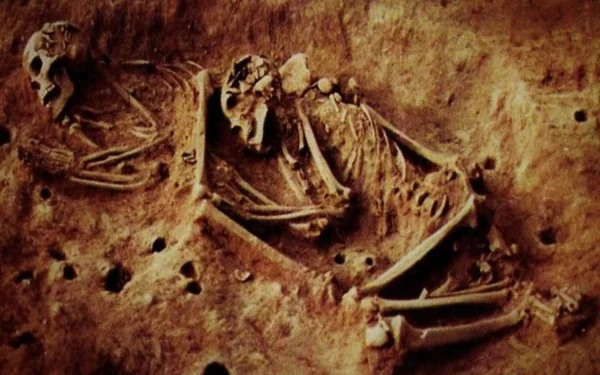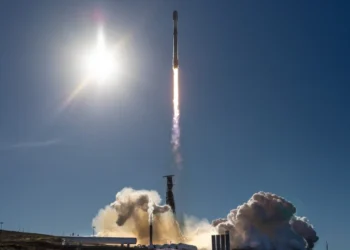Archaeologists Uncover Rare Genetic Lineage in South America
In a groundbreaking discovery that could reshape our understanding of ancient human migration and evolution, archaeologists have unearthed a 6,000-year-old human skeleton in Colombia, revealing a genetic lineage previously unknown to modern science. The ancient remains were found at the Chico archaeological site in the Bogotá Altiplano region of central Colombia, and they carry rare DNA markers that have no trace in the modern populations of the area.
The find is not only significant for the study of ancient human biology but also raises critical questions about early migration patterns into South America and the genetic diversity of prehistoric humans that once inhabited the continent.
Chico Archaeological Site: A Window Into the Distant Past
The Chico site, located in the Andean highlands near Bogotá, has long been known for its prehistoric significance, offering insights into early agricultural societies that thrived in the region thousands of years ago. However, this latest discovery is arguably one of the most important to emerge from the site.
Researchers recovered well-preserved skeletal remains and began a detailed genetic analysis using samples extracted from bones and teeth. The samples revealed a distinct genetic profile that does not align with any currently known Indigenous or modern populations of Colombia or broader South America.
Genetic Evidence of an Isolated and Extinct Lineage
The DNA evidence suggests that the individual belonged to a genetically isolated group, possibly an extinct human lineage that separated early from other populations. According to the team of geneticists and archaeologists involved in the study, it is possible that this group was one of the first human waves to enter South America, potentially arriving thousands of years before other migratory groups.
“This DNA does not match any of the Indigenous groups currently found in South America, nor does it resemble the DNA of more recent pre-Columbian populations,” said one of the lead geneticists on the project. “This indicates the presence of a distinct and possibly extinct genetic lineage, which was isolated for millennia before disappearing.”
How the Research Was Conducted: DNA From 21 Ancient Individuals
To build a more comprehensive genetic timeline, researchers analyzed the remains of 21 individuals who lived in the Bogotá Altiplano between 6,000 and 500 years ago. These samples were gathered from various excavation sites, with special attention given to the integrity of the bone collagen and dental enamel, which are crucial for retrieving ancient DNA.
Using cutting-edge genomic sequencing techniques, scientists were able to reconstruct significant parts of the genetic code from the remains. What they found was startling: the DNA from the ancient Chico human stood apart from all other samples.
Some of the other samples showed gradual genetic shifts that align with known migrations and cultural exchanges across the Andes, but the Chico individual appeared to belong to a completely different ancestral origin.
Implications for Human Migration to South America
The discovery could prompt a re-evaluation of the timeline and routes by which humans first settled South America. For decades, the most accepted theory has been that early humans migrated from Siberia through the Bering Strait, moving into North America and eventually filtering down into Central and South America via inland and coastal routes.
However, the unique genetic makeup of the Chico skeleton challenges this linear progression. It raises the possibility of earlier, undocumented migrations, possibly by sea from Polynesia, Southeast Asia, or even Africa, that occurred independently of the more widely known migratory waves.
“It opens up the exciting but controversial possibility that there were multiple migrations to South America, some of which have left no genetic legacy in today’s populations,” said an evolutionary biologist familiar with the research.
Why the Ancient DNA Is No Longer Found Today
One of the most intriguing aspects of the study is that the genetic traces found in the ancient remains have completely vanished from the modern gene pool. Scientists believe this could be due to a variety of factors:
- Genetic drift: Over thousands of years, random changes in gene frequencies could have caused the extinction of certain lineages.
- Interbreeding and assimilation: The original population may have been absorbed by later migratory groups, with their distinct markers gradually diluted.
- Isolation and extinction: The group may have remained geographically and genetically isolated, eventually dying out without mixing with surrounding populations.
Regardless of the mechanism, the result is that the unique genetic profile of the ancient Chico human is no longer present in modern Colombians or neighboring Indigenous communities.
Contextualizing the Find: What We Know About Early Andean Societies
The Bogotá Altiplano was once a hub of early Neolithic development, where societies transitioned from hunter-gatherers to agriculturalists. Archaeological findings from the region include stone tools, pottery shards, and early evidence of maize cultivation. These communities laid the groundwork for later civilizations in the Andes, such as the Muisca people, who thrived prior to the arrival of Spanish conquistadors.
The Chico skeleton predates these known civilizations, placing it in a prehistoric window that is still poorly understood. That makes this discovery all the more important, as it sheds light on pre-Muisca human activity in the highlands.
Technological Breakthroughs in Ancient DNA Extraction
The success of the DNA analysis owes much to recent technological advancements in the field of archaeogenetics. Extracting viable DNA from remains that are thousands of years old is notoriously difficult, especially in tropical environments where heat and humidity can degrade genetic material rapidly.
The research team employed ultra-clean laboratory environments, targeted DNA enrichment methods, and high-throughput sequencing to recover and sequence the ancient genetic material. This breakthrough demonstrates the increasing feasibility of genomic archaeology in regions previously considered too challenging for such analysis.
What Comes Next: Further Exploration and Comparative Analysis
Archaeologists and geneticists plan to expand the research by exploring other ancient burial sites in Colombia and neighboring countries to determine whether similar genetic profiles exist elsewhere. This would help verify whether the Chico lineage was a localized anomaly or part of a broader, unrecognized population that once inhabited the continent.
There are also calls for more interdisciplinary collaboration between archaeologists, geneticists, anthropologists, and linguists to piece together a more cohesive story of this mysterious group.
Conclusion: A Discovery That Redefines the Human Past in South America
The discovery of a 6,000-year-old human skeleton with rare DNA in Colombia has opened a new chapter in the understanding of ancient human migrations and genetic evolution in South America. With evidence pointing to a completely distinct and extinct genetic lineage, this find challenges conventional theories and underscores the complexity of early human settlement in the Americas.
As technology continues to evolve and more ancient DNA is recovered, the coming years may see further revelations that reshape the narrative of human history, not just in South America but across the globe.

























